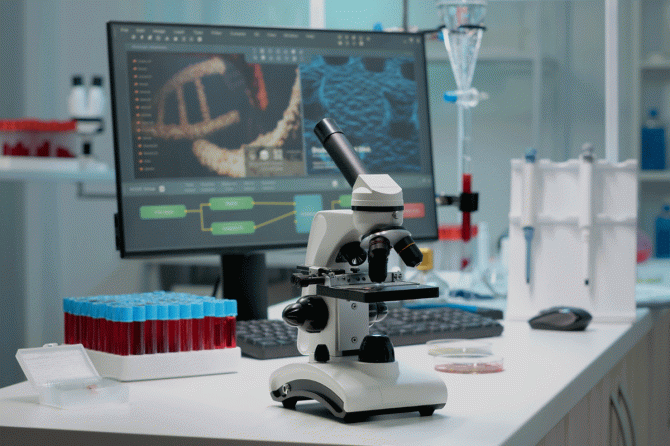
Tech Innovations in Healthcare: A Glimpse into Diagnostic Services
Introduction
Providing insight into the world of diagnostic services, this article unveils the pivotal role these services play in modern healthcare. From advanced imaging techniques to cutting-edge laboratory tests, diagnostic services form the bedrock of accurate medical assessments.
The Evolution of Diagnostic Technology
From X-Rays to 3D Imaging
Tracing the evolution of diagnostic technology, we explore how diagnostic imaging has progressed from traditional X-rays to state-of-the-art 3D imaging. This technological leap enhances precision in diagnosing a myriad of medical conditions.
Laboratory Innovations
Delving into the realm of laboratories, we highlight the innovative technologies that have revolutionized diagnostic testing. Automation, molecular diagnostics, and high-throughput screening contribute to faster and more accurate results.
Diagnostic Imaging Modalities
Magnetic Resonance Imaging (MRI)
Unraveling the mysteries of MRI, we discuss how this non-invasive imaging modality provides detailed views of internal structures. Its significance in neuroimaging, musculoskeletal assessments, and oncology is paramount.
Computed Tomography (CT) Scans
Navigating through the capabilities of CT scans, we shed light on how this imaging technique is instrumental in diagnosing conditions ranging from fractures to internal organ abnormalities.
Ultrasound Technology
Exploring the versatility of ultrasound, we examine its applications in obstetrics, cardiology, and abdominal imaging. The non-ionizing nature of ultrasound makes it a preferred choice in various medical scenarios.
Laboratory Diagnostics
Hematology and Blood Chemistry
Discussing the importance of blood tests, we delve into hematology and blood chemistry analyses. These tests offer valuable insights into a patient’s overall health, aiding in the detection of disorders and diseases.
Molecular Diagnostics
Highlighting the revolutionary impact of molecular diagnostics, we explore how techniques like PCR and genetic testing contribute to personalized medicine and targeted treatment approaches.
Point-of-Care Testing
Rapid and Accurate Results
Emphasizing the significance of point-of-care testing, we elucidate how these rapid diagnostic methods provide on-the-spot results. From glucose monitoring to infectious disease detection, point-of-care tests enhance patient care.
The Role of Artificial Intelligence (AI)
Augmenting Diagnostic Accuracy
Exploring the integration of AI in diagnostic services, we showcase how machine learning algorithms analyze complex medical data, aiding healthcare professionals in making more accurate and timely diagnoses.
Ensuring Quality and Accuracy
Regulatory Standards
Addressing the importance of regulatory standards, we discuss how adherence to stringent quality control measures ensures the reliability of diagnostic services. Accreditation and certification play key roles in maintaining industry standards.
Recap: Empowering Healthcare through Diagnostics
In recap, this article provides a comprehensive overview of diagnostic services, showcasing their evolution, technological advancements, and crucial role in modern healthcare. As diagnostic services continue to advance, they empower healthcare professionals to make informed decisions, ultimately improving patient outcomes.
Frequently Asked Questions (FAQs)
Q1: What are the common diagnostic imaging procedures?
A1: Common diagnostic imaging procedures include X-rays, CT scans, MRIs, ultrasounds, and nuclear medicine scans. Each modality serves specific purposes in visualizing different aspects of the body.
Q2: How has AI impacted diagnostic accuracy?
A2: AI has significantly improved diagnostic accuracy by analyzing large datasets to identify patterns and anomalies. This technology assists healthcare professionals in interpreting complex medical information, leading to more precise diagnoses.
Q3: Can you explain the significance of point-of-care testing?
A3: Point-of-care testing allows for immediate diagnostic results, reducing the time between testing and treatment initiation. This is crucial in emergency situations or for conditions requiring prompt intervention.
Q4: What regulatory standards govern diagnostic services?
A4: Regulatory bodies, such as the FDA, set standards to ensure the safety and effectiveness of diagnostic services. Adherence to these standards is vital to maintaining the quality and reliability of diagnostic procedures.
Q5: How do diagnostic services contribute to personalized medicine?
A5: Molecular diagnostics and genetic testing, integral components of diagnostic services, play a pivotal role in personalized medicine. These tests provide insights into an individual’s unique genetic makeup, influencing targeted treatment approaches.
Conclusion
In conclusion, diagnostic services represent the cornerstone of modern healthcare, encompassing a diverse range of imaging techniques, laboratory analyses, and innovative technologies. The continuous evolution of diagnostic tools, coupled with the integration of AI, is propelling the field toward greater precision and efficiency. By ensuring adherence to rigorous regulatory standards, diagnostic services stand as a beacon of reliability in the medical landscape.
Leave a reply
Most Commented